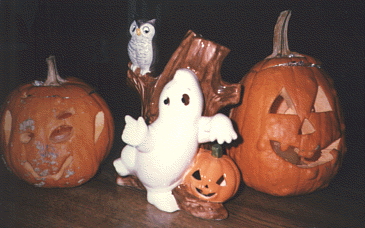
|


Anne’s Quiz #12
Halloween
I gleaned much of this information from web sources, but you can find a lot of facts packed
into one source in
Halloween : An American Holiday, an American History
by Lesley Pratt Bannatyne.
| HOME | Quizzes | Wordsearch | 6 Letters | Memory | Bingo |
| Privacy Policy | Awards | Anne's Picks | Guestbook | Links |
Sponsored by Cooper Internet Services and the Coopers.
Send comments and compliments to cooperag(at)cooperis.com
quiz 12 created 1996
 Science/Nature
Science/Nature
